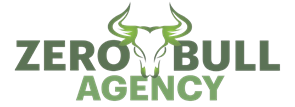Sales Pitches – The Good, The Bad, and The Ugly
Whether you’re a salesperson by trade, an entrepreneur, or just trying to get the word out about your latest and greatest product or service, chances are you’ve considered using email or LinkedIn to reach a wider audience. And why wouldn’t you?
After all, the potential reach is hard to ignore, with over 2.6 billion active email users and over 610 million users on LinkedIn.
But before you start firing off emails and messages left and right, you should know a few things about sales pitches on these platforms.
Let’s look at what makes a good sales pitch, what makes a bad one, and the ugly part of pitches.
THE GOOD
Regarding email and LinkedIn pitches, the good news is that there’s a lot of room for creativity. These platforms provide an ideal opportunity for you to grab someone’s attention and make a lasting impression.
With email, in particular, you can personalize your pitch in a way that feels natural and not forced. And when used right, an email pitch can be a very powerful tool for generating leads or even closing sales.
On LinkedIn, meanwhile, you have access to a highly-targeted professional network that provides an ideal environment for making connections and generating leads. The LinkedIn message allows you to directly contact any user on the platform, which means you can tailor your pitch specifically to them.
THE BAD
Of course, as with anything in life, there is such thing as too much of a good thing. When it comes to sales pitches on email and LinkedIn, this is definitely true. If done incorrectly, these pitches can quickly become spammy or even downright annoying.
With email pitches, the key is to strike a balance between being personal and professional. It’s important to avoid using cheesy lines or coming across as too salesy. At the same time, you also don’t want your pitch to sound like a robot wrote it.
Finding that perfect balance can be difficult, but it’s essential if you want your pitch to be well-received.
LinkedIn pitches can be just as challenging. Because LinkedIn is a professional network, it’s essential to maintain professionalism in your messages and posts.
However, because LinkedIn is also a social network, you also need to be social—which means injecting some personality into your pitch so that it doesn’t come across as stiff or boring.
Again, striking that perfect balance can be tricky, but it’s essential for making sure your LinkedIn pitch resonates with its intended audience.
THE UGLY
Sales pitches are a necessary part of doing business, but they can be a real turn-off if they’re not done right. The worst sales pitches are the ones that seem to be all about the seller, with no regard for the buyer’s needs.
These pitches are known as…
PITCH-SLAPS.

A pitch-slap is when you think a conversation with someone truly feels legitimate, only for them to immediately launch into an intense sales spiel.
Pitch-slaps feel immediate, are typically not researched, feel aggressive and pushy, and are unlikely to result in a close sale.
However, we are here to tell you that you can avoid this.
We know you are wondering how, so let us introduce you to The Pitch-Slap.
THE PITCH-SLAP
Sales pitches can effectively reach more people and generate leads—but only if done correctly. That is why, on The Pitch-Slap, we focus on helping sales teams stop the pitch-slap approach so they can connect with prospects, gain trust, and book appointments.
So, are you ready to stop pitch-slapping your prospects?
We’re here to provide value, not take advantage of your time.
